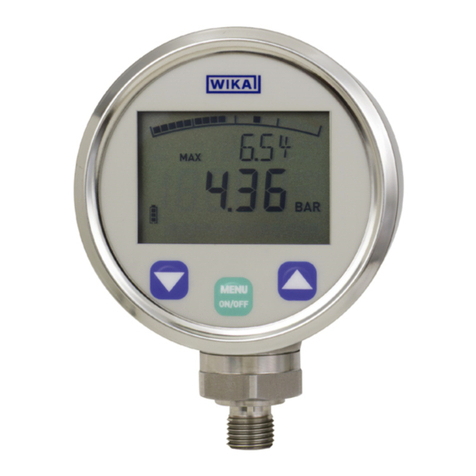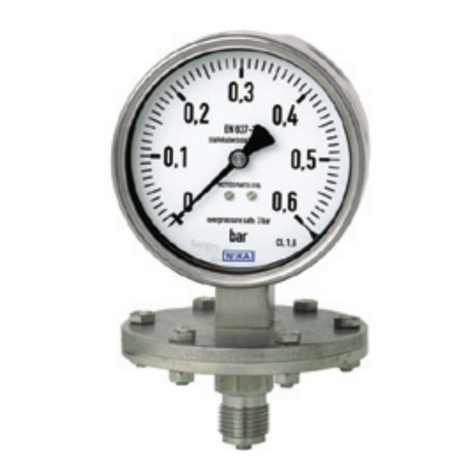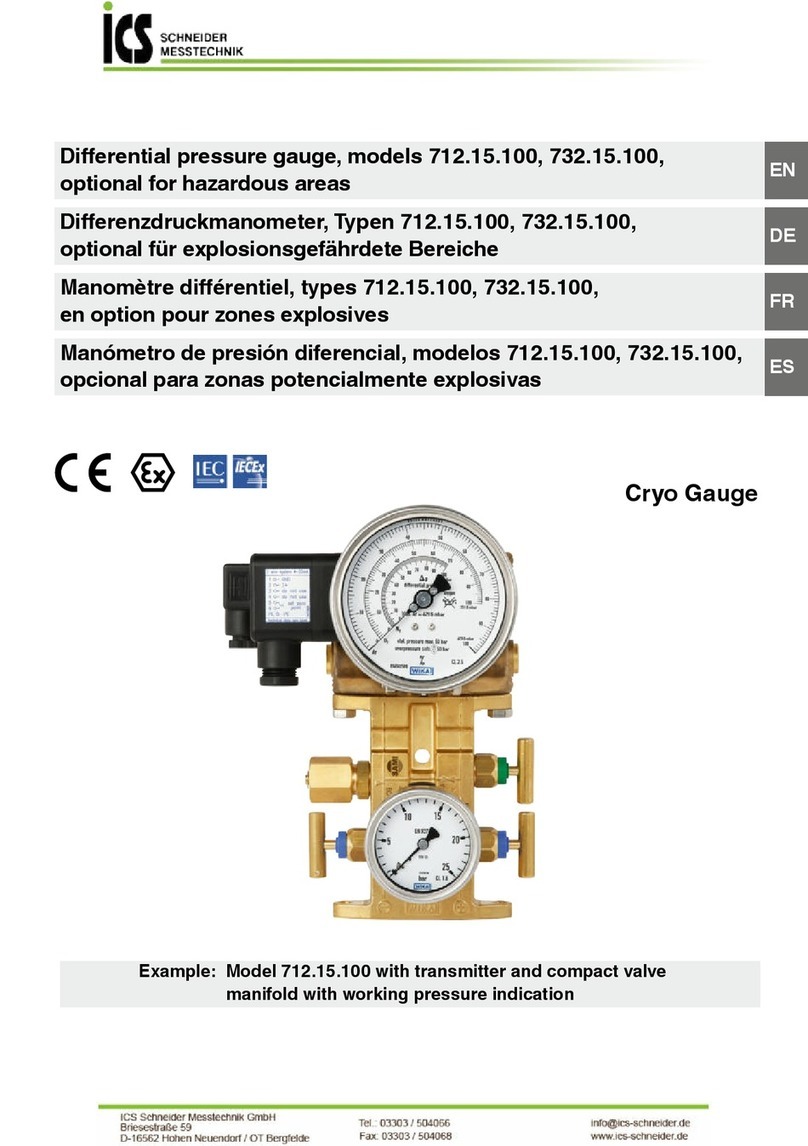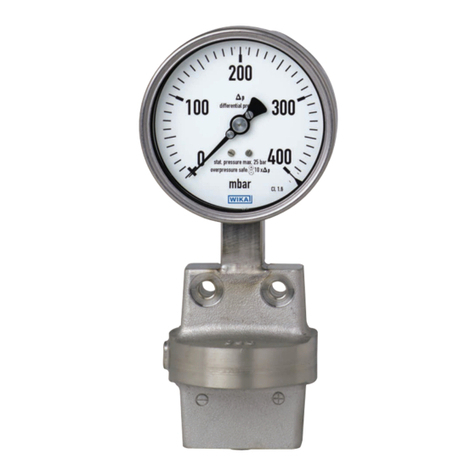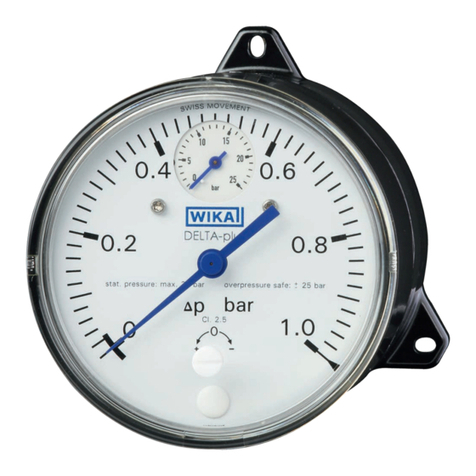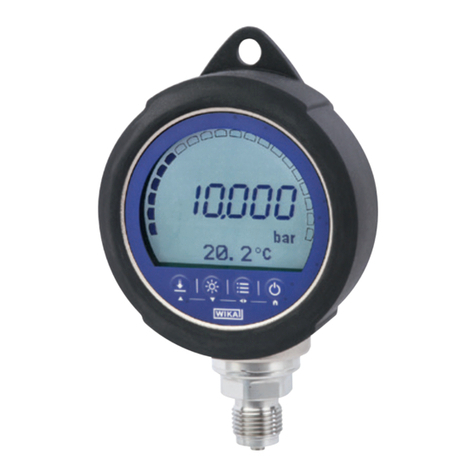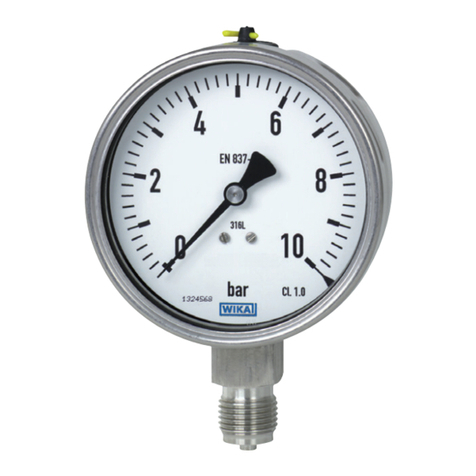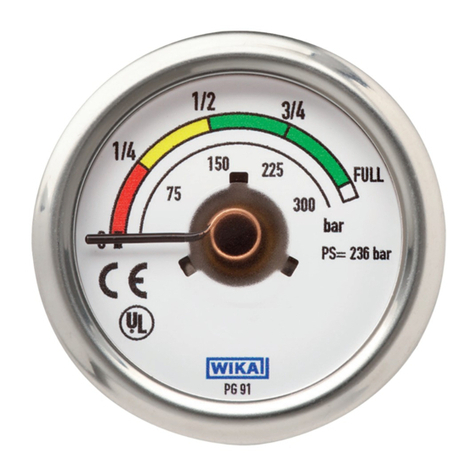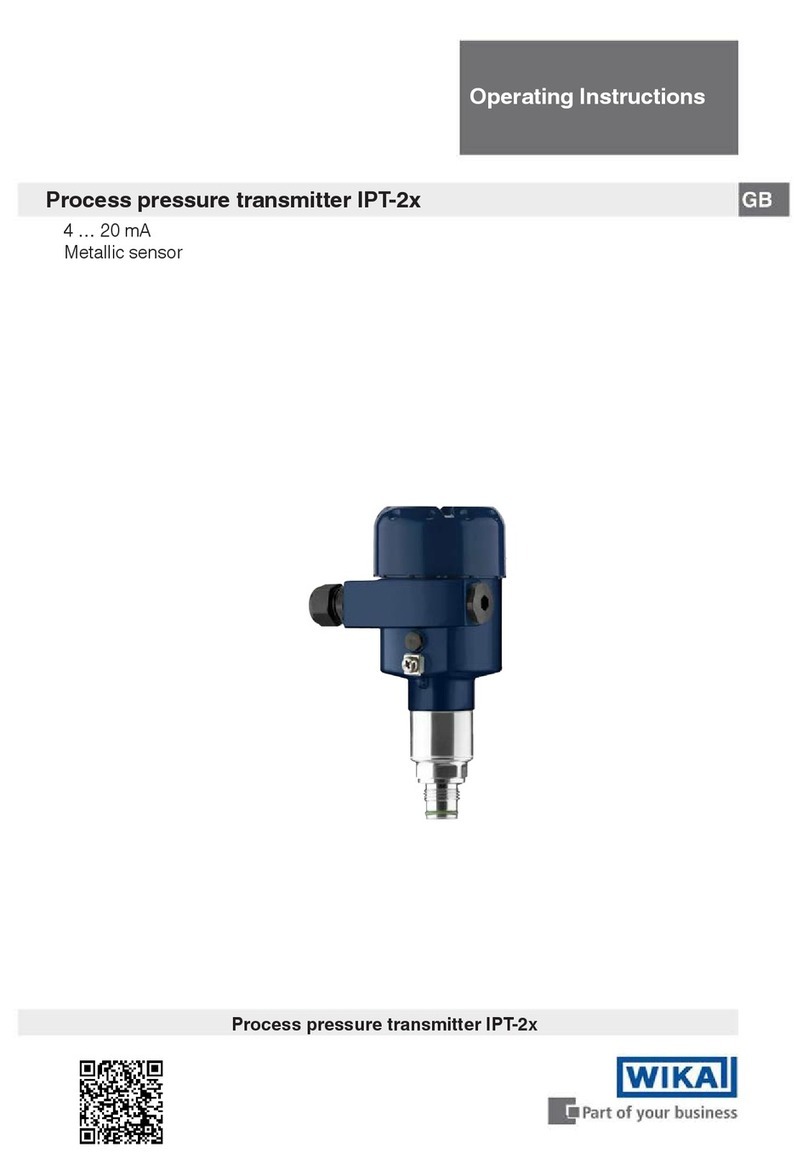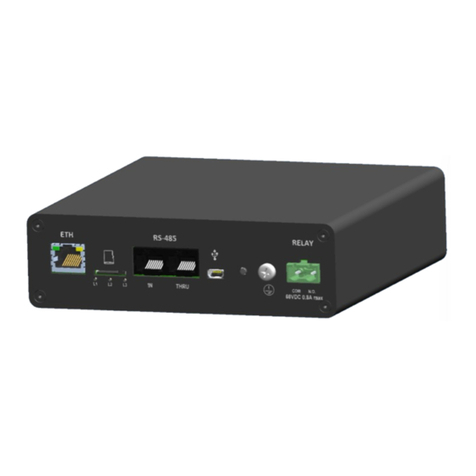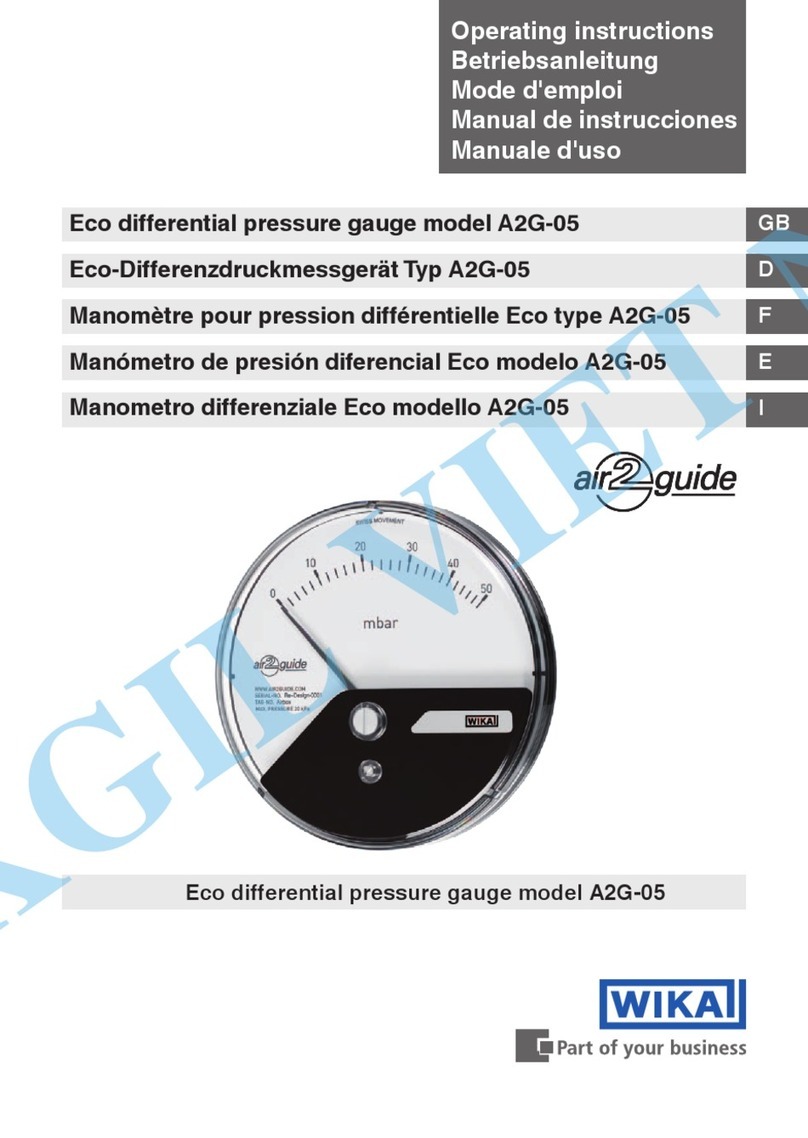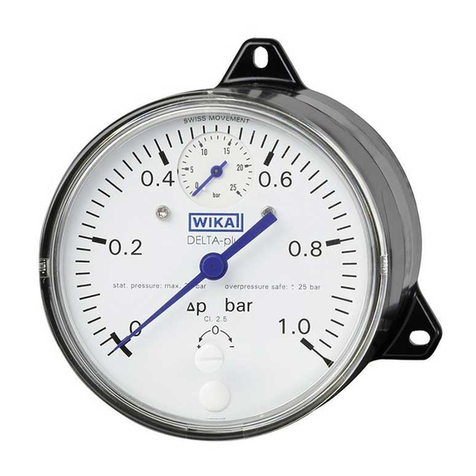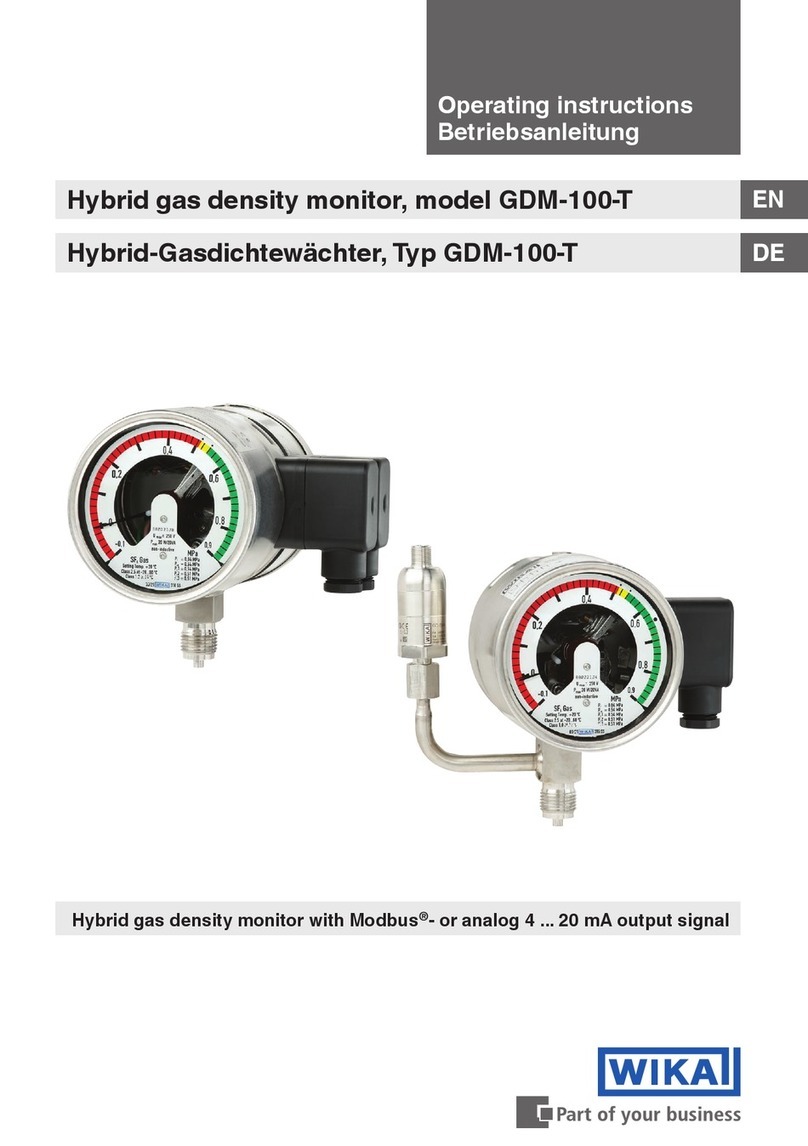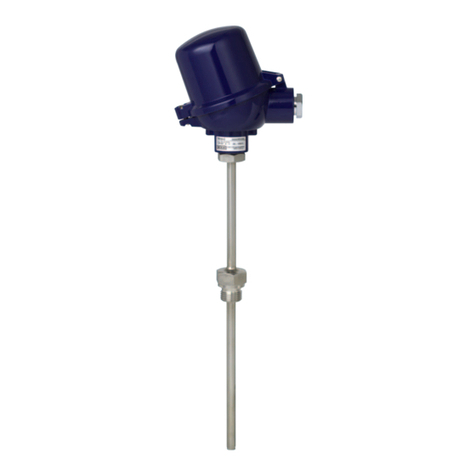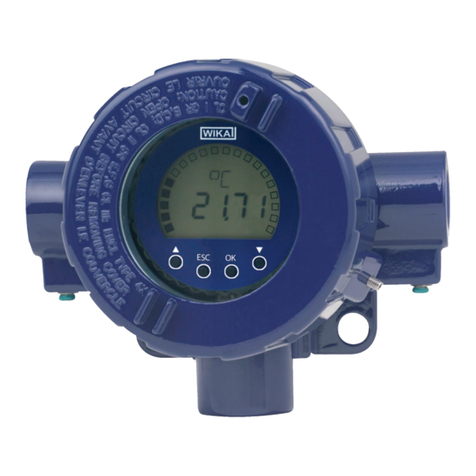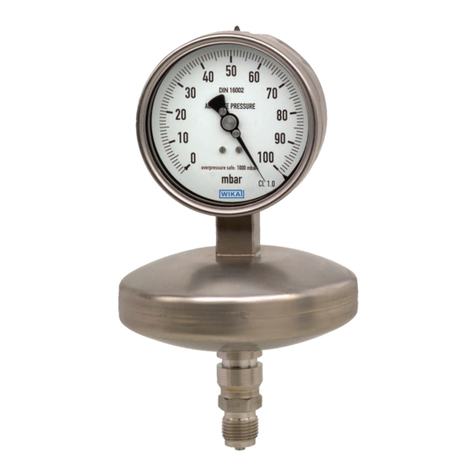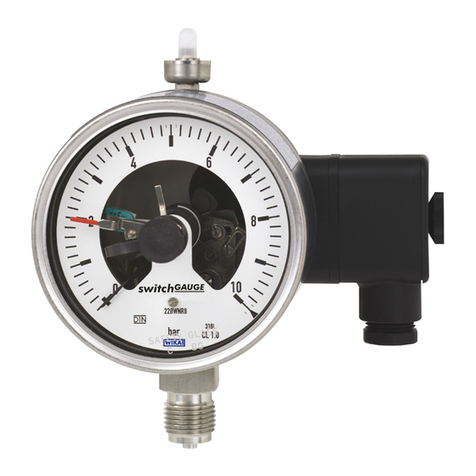
EN
14486176.01 07/2021 EN/DE
WIKA additional operating instructions for installation of models TC82, TC83 Calitum®
10
Setting of the purge gas pressure
The purge gas pressure must be at least 0.25 … 0.35 bar [3.6 ... 5.1 psi] over the maximum
operating pressure of the reactor.
Setting the purge gas flow rate
The suitable flow rate of the purge gas normally ranges around 10 … 12 litres per hour.
Depending on the process an adjustment of given values can be required.The
responsibility rests with the operator.
Functional check of the flushing
Increase the pressure on the pressure controller of the purge gas control panel by about
0.7 ... 1 bar [10 ... 15 psi]. Check that the flow rate on the flow indicator increases.Then
reduce the pressure to the previous setting and check whether the flow rate returns to the
previous value.
The integrity check causes a temporary drop in the measured temperature.
If the flow indicator does not respond to changes in purge pressure, this may be due to the
following:
■
Leakage, causing the purge gas to escape into the atmosphere and not to return to the
flow indicator
■
Breakage of the thermocouple protection tube, causing purge gas to escape into the
reactor and reaction gases to come into contact with the thermocouple, leading to
increasing inaccuracy of the measurement and eventually to complete failure, corrosion
and poisoning of the thermocouple.
■
Blockage of the purge lines by condensed sulphur
This is usually caused by a break in the thermocouple protection tube. An indicator
of this problem may be a visible sulphur deposit on the inner surface of the glass flow
indicator.
4. Horizontal installation
Horizontal installation of the thermometer presents particular difficulties for the installer.
They must support the full weight of the thermometer while inserting it into the nozzle,
without the weight of the thermometer exerting a lateral load on the protection tube, which
is at risk of breakage.
The WIKA model IR80 installation rods offer a simple and safe way to support the heavy
thermocouple during installation and thus minimise the risk of damage or breakage of the
protection tube.
3. Integrity check / 4. Horizontal installation












